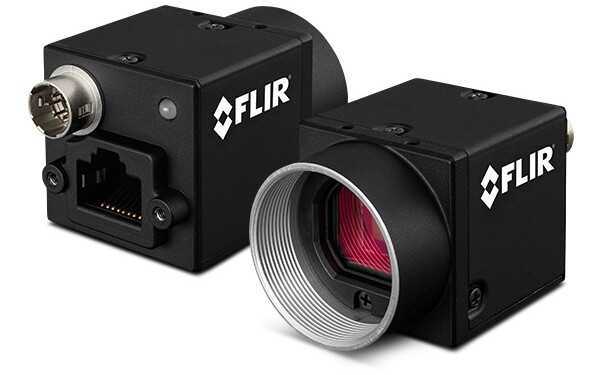The latest addition to Teledyne FLIR’s Blackfly S GigE series of area scan cameras is designed with on-camera polarization to tackle the effects of dynamic or excessive light, reflections, haze, and glare from shiny surfaces like glass, plastic, and metal. Called the BFS-PGE-123S6P-C, the 12 MP camera was created for use with intelligent traffic systems, unmanned aerial systems, inspection lines with transparent or reflective parts, and related applications.
“With any outdoor application, including UAVs, the ability to filter polarized light can be incredibly important,” Teledyne FLIR’s Riana Sartori told Commercial UAV News. “Filtering polarized light gives the ability to remove reflections on hard surfaces such as glass or water as well as reflections in the sky. This is beneficial for aerial photography where these types of reflections are challenging to remove in post-processing.”
The 36-gram camera combines Sony’s IMX253 MZR sensor with a glare reduction feature built into Teledyne FLIR’s Spinnaker SDK. The BFS-PGE-123S6P-C offers control over exposure, gain, white balance, and color correction. It also features an on-sensor polarization to capture light from four angles in a single frame.
“With advancements in sensor technology, Teledyne FLIR’s camera has polarization built into the pixel structure of the sensor,” said Sartori, who heads Teledyne FLIR’s Machine Vision Product Management group. “This on-sensor polarization is done at 4 separate angles (0, 45, 90, 135 degrees) allowing for much better glare reduction without the additional complexity of a polarization filter on the lens.”
Teledyne FLIR believes the camera can be used in a wide range of applications. For example, the BFS-PGE-123S6P-C could reduce system complexity, payload weight, and failure points while improving image quality in challenging lighting conditions when used with unmanned aerial systems. Also, intelligent traffic systems applications, like capturing images of seatbelt or mobile device violations through reflective windshields, could benefit from the unit’s on-camera polarization features.















Comments